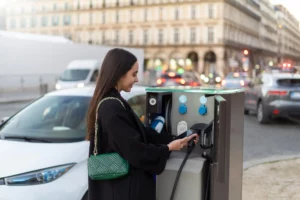
Home / EV Charging News / 5 Things You Didn’t Know About EV Batteries
Electric vehicles (EVs) are transforming the automotive landscape, powered by sophisticated battery technologies. While most people understand the basic concept of EV batteries, there are many lesser-known details that highlight the innovation and complexity behind these energy storage systems. Here are five intriguing facts about EV batteries that you might not know.
The majority of EVs on the market today use lithium-ion batteries, but within this category, several different chemistries are employed, each with unique properties and benefits. The two most common types are lithium nickel manganese cobalt oxide (NMC) and lithium iron phosphate (LFP).
Emerging technologies like solid-state batteries, which replace the liquid electrolyte with a solid one, promise to further revolutionize EV battery performance by increasing energy density and safety while reducing charging times.
When an EV battery’s capacity drops below 70-80%, it may no longer be suitable for vehicle use but can still be valuable in other settings. These used batteries can be repurposed for energy storage systems, extending their usefulness and minimizing waste.
Recycling EV batteries is critical to reducing environmental impact and recovering valuable materials. Traditional recycling methods involve shredding batteries and using chemical processes to separate the components. However, innovative approaches are improving efficiency and sustainability.
New recycling technologies focus on recovering a higher percentage of materials, including lithium, cobalt, nickel, and manganese. These advanced methods not only reduce the environmental footprint of battery production but also lower costs by reintroducing recycled materials into the supply chain. Companies are also exploring “direct recycling,” which aims to recover battery materials in a form that can be directly reused in new batteries, further enhancing the sustainability of the EV industry.
A critical but often overlooked component of EV batteries is the Battery Management System (BMS). This sophisticated technology monitors and manages the battery’s performance, ensuring safety, efficiency, and longevity.
DC fast charging, which can replenish an EV battery much quicker than standard AC charging, is both a convenience and a potential concern for battery health. Frequent fast charging can generate more heat and stress the battery cells, potentially accelerating degradation.
EV batteries are a cornerstone of the electric vehicle revolution, and understanding their complexities can help consumers and industry stakeholders make informed decisions. From the diverse chemistries used in their construction to innovative second-life applications and advanced recycling techniques, EV batteries are more than just power sources; they are pivotal to the future of sustainable transportation. By leveraging cutting-edge technology and adopting smart charging practices, we can maximize the benefits of EV batteries while minimizing their environmental impact. As battery technology continues to evolve, it promises to further enhance the efficiency, affordability, and sustainability of electric vehicles.
